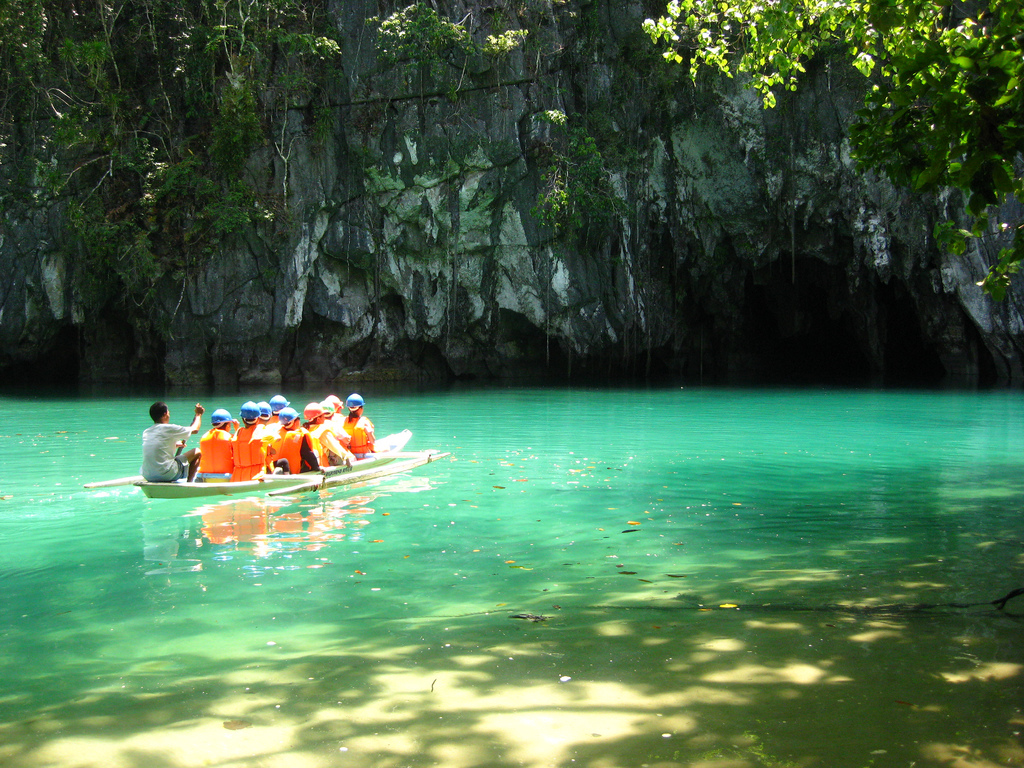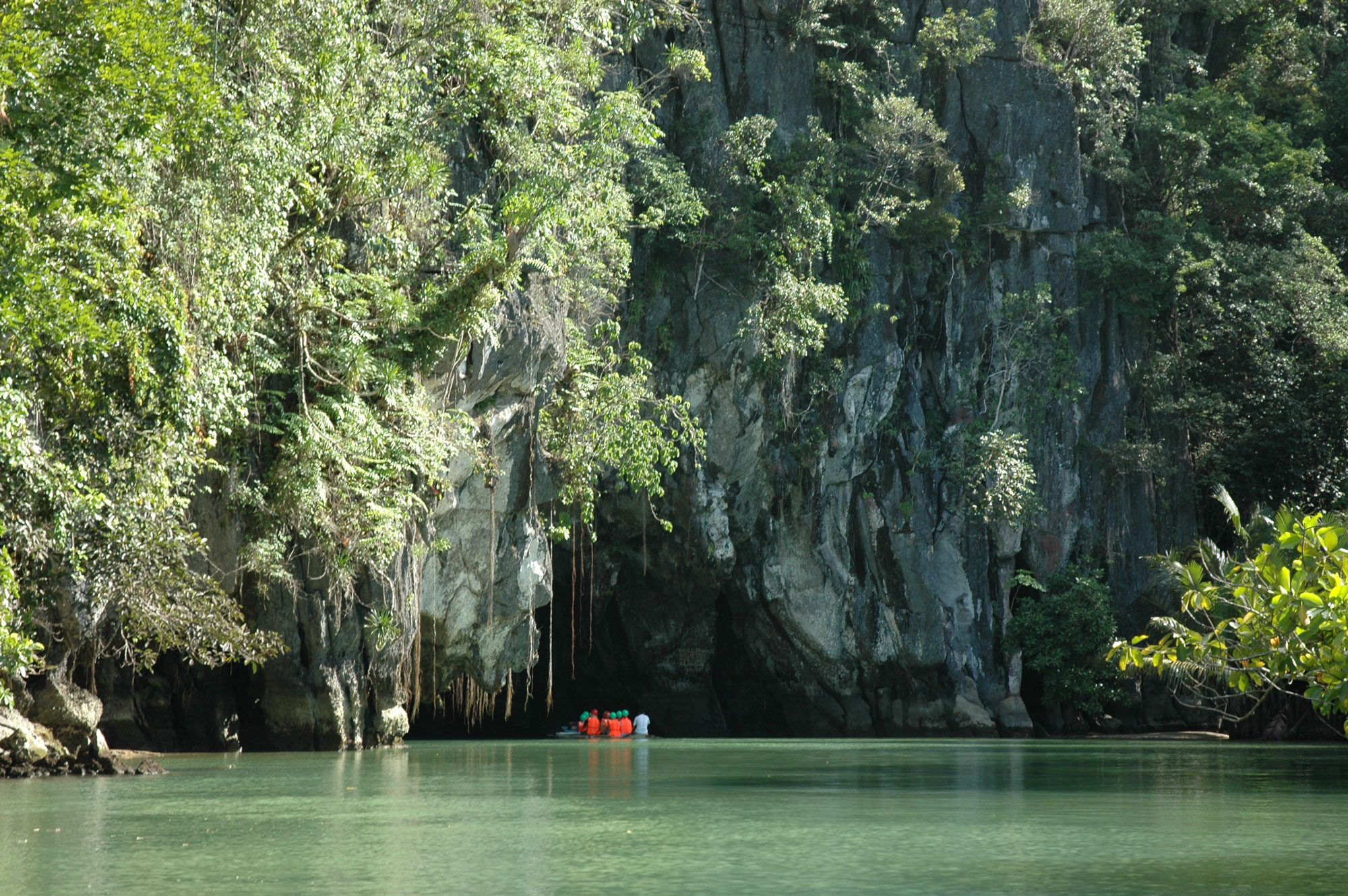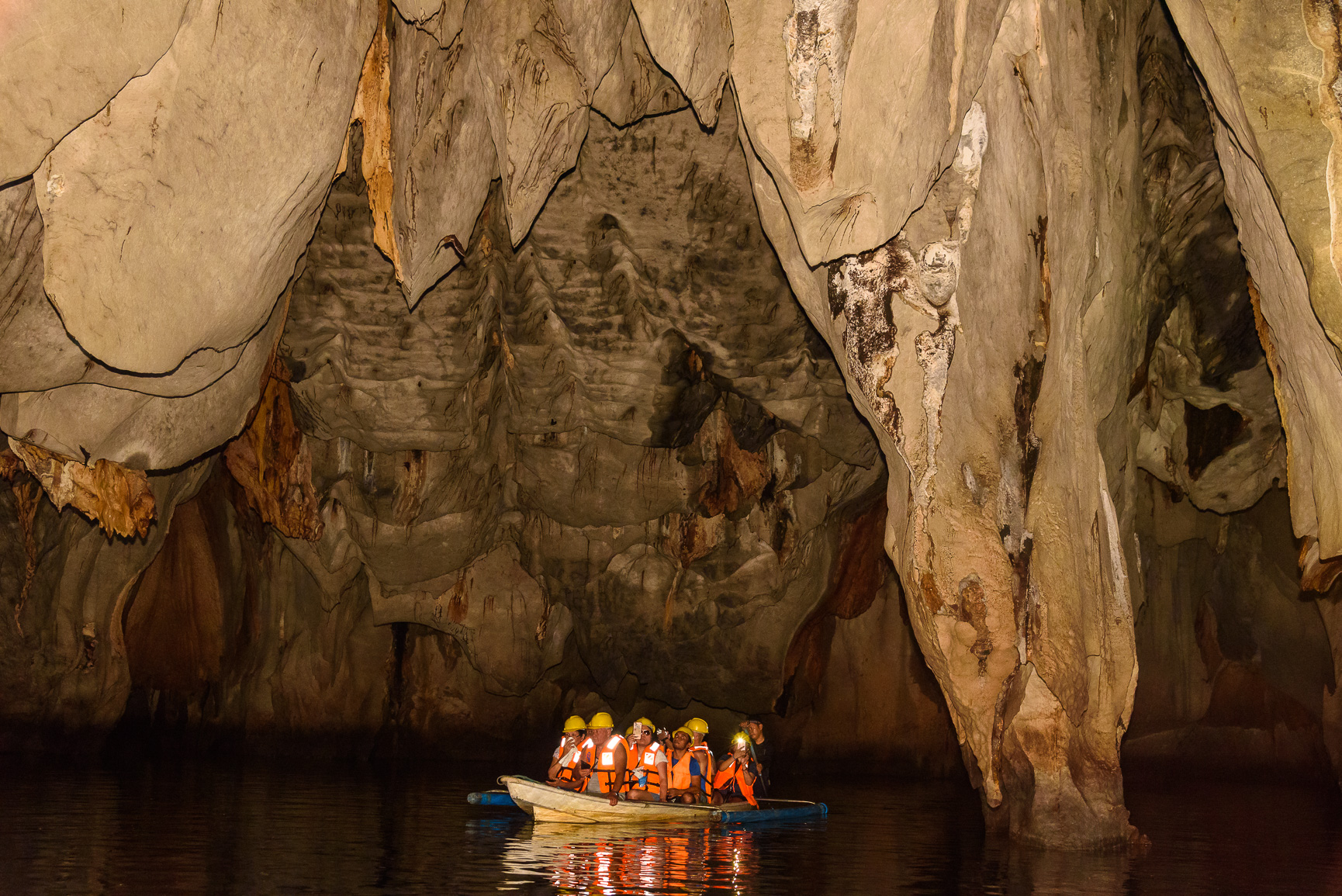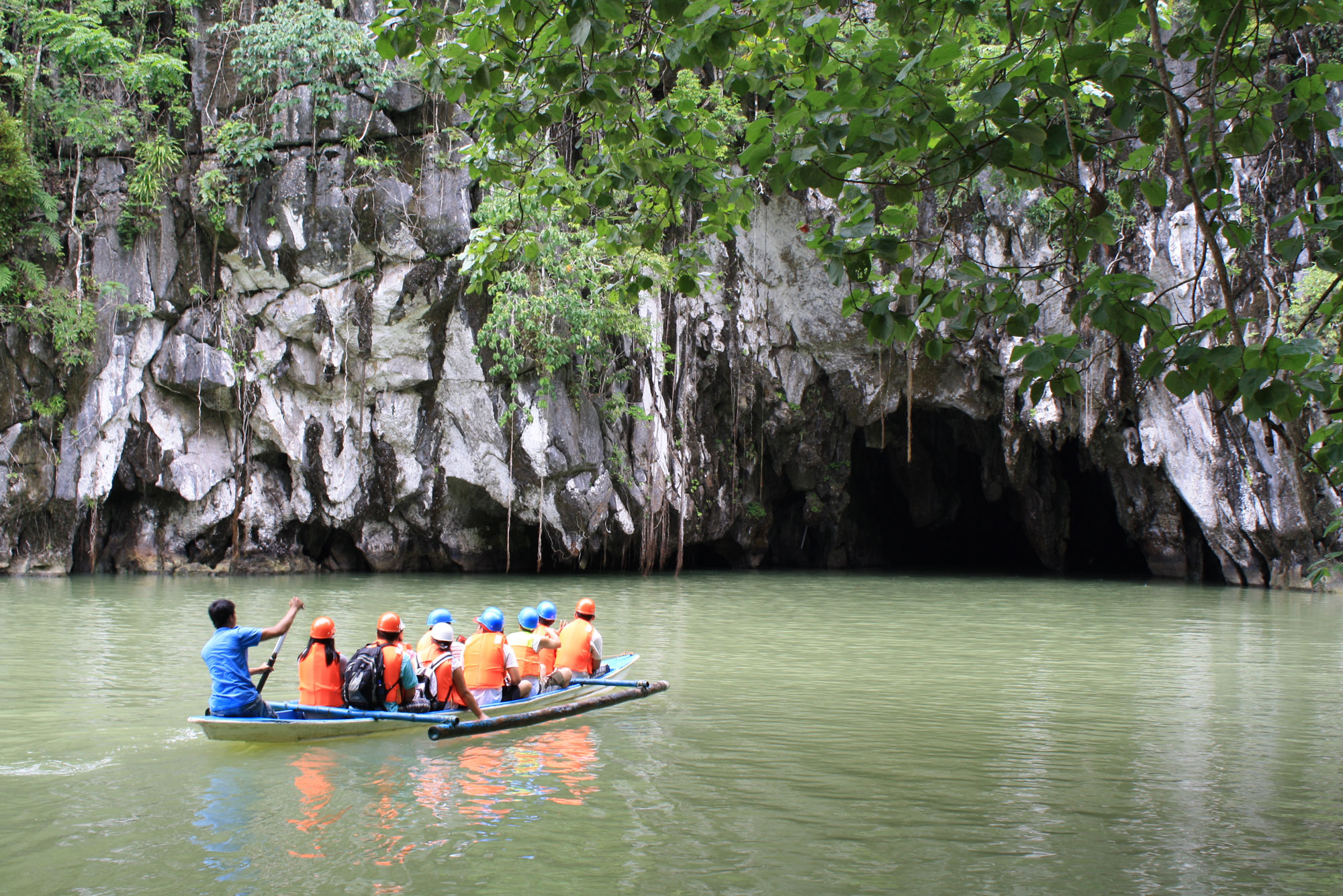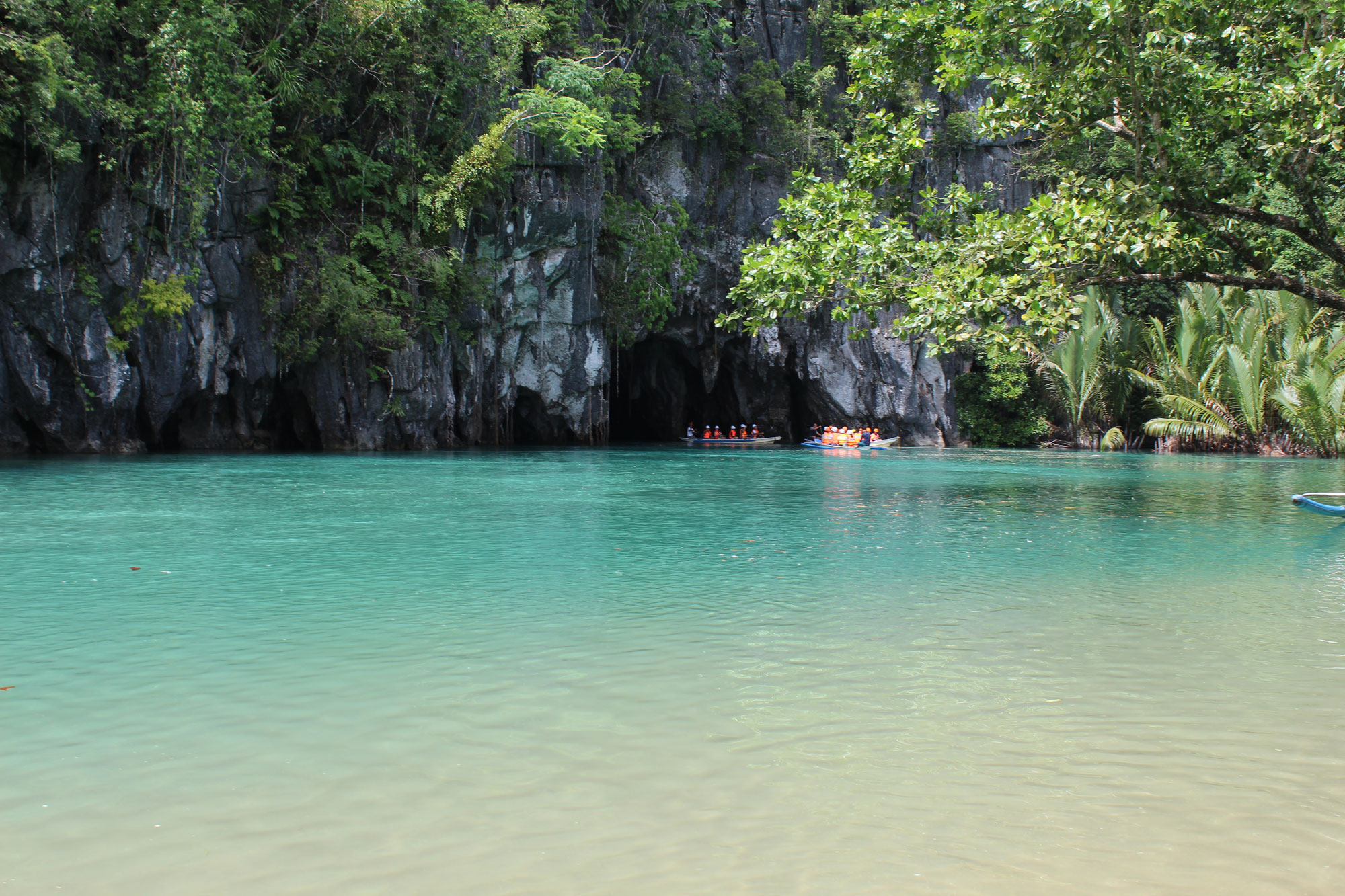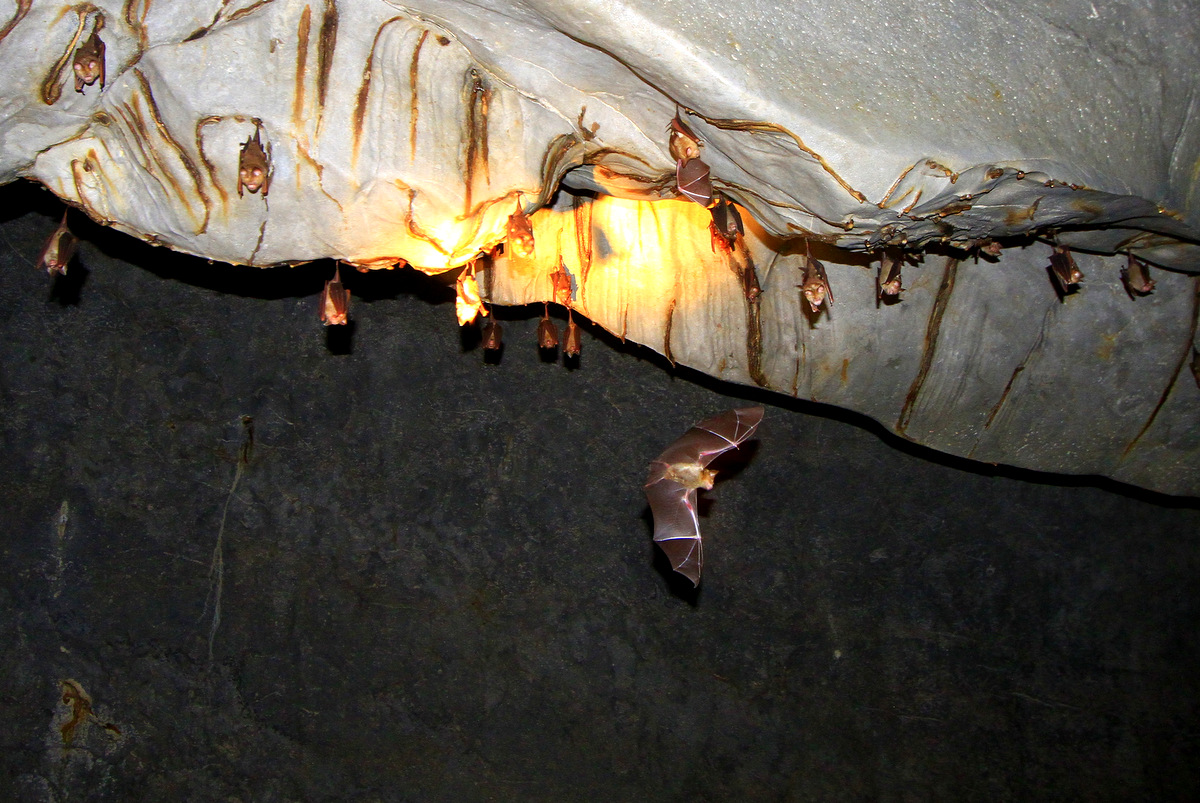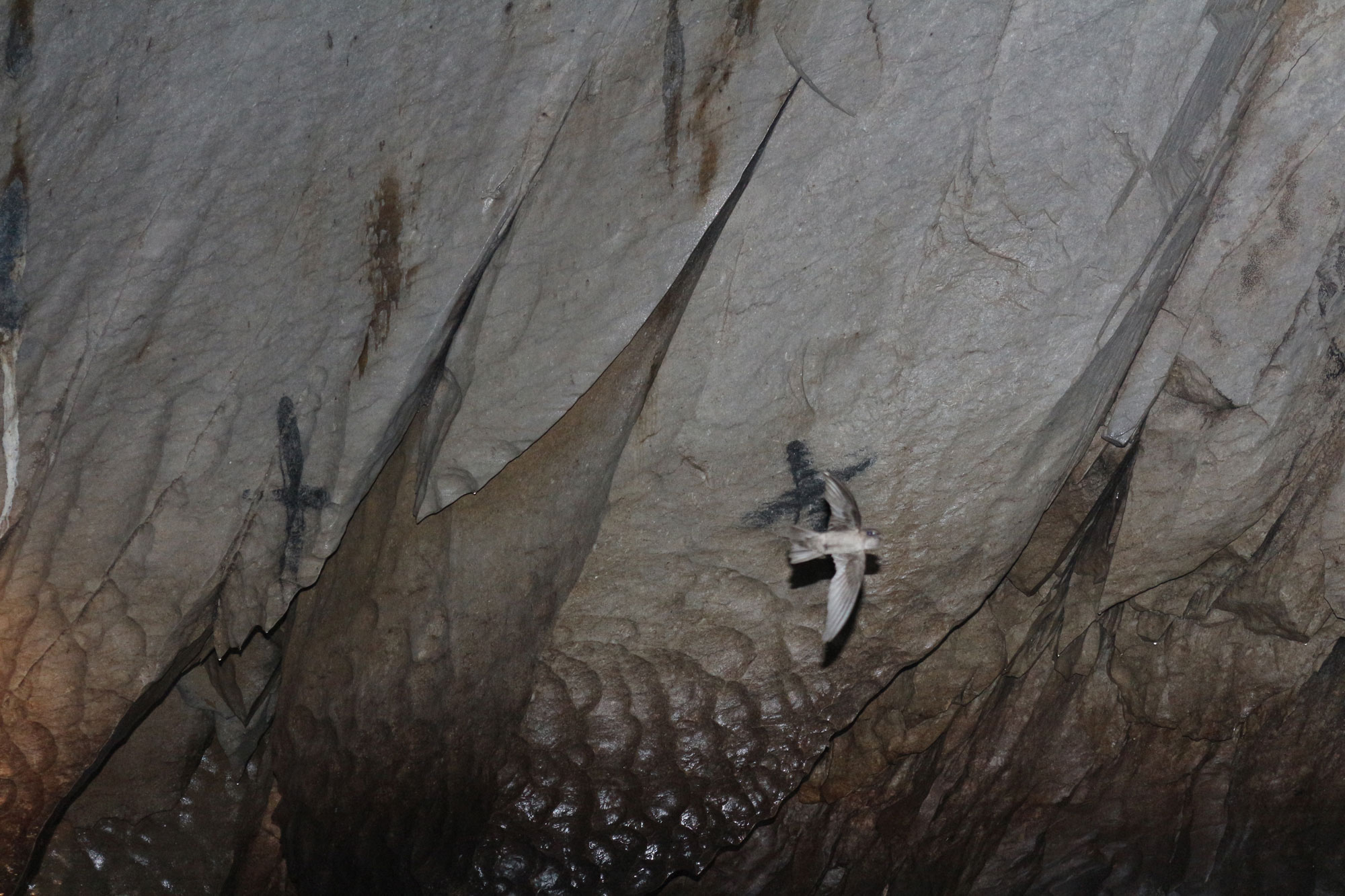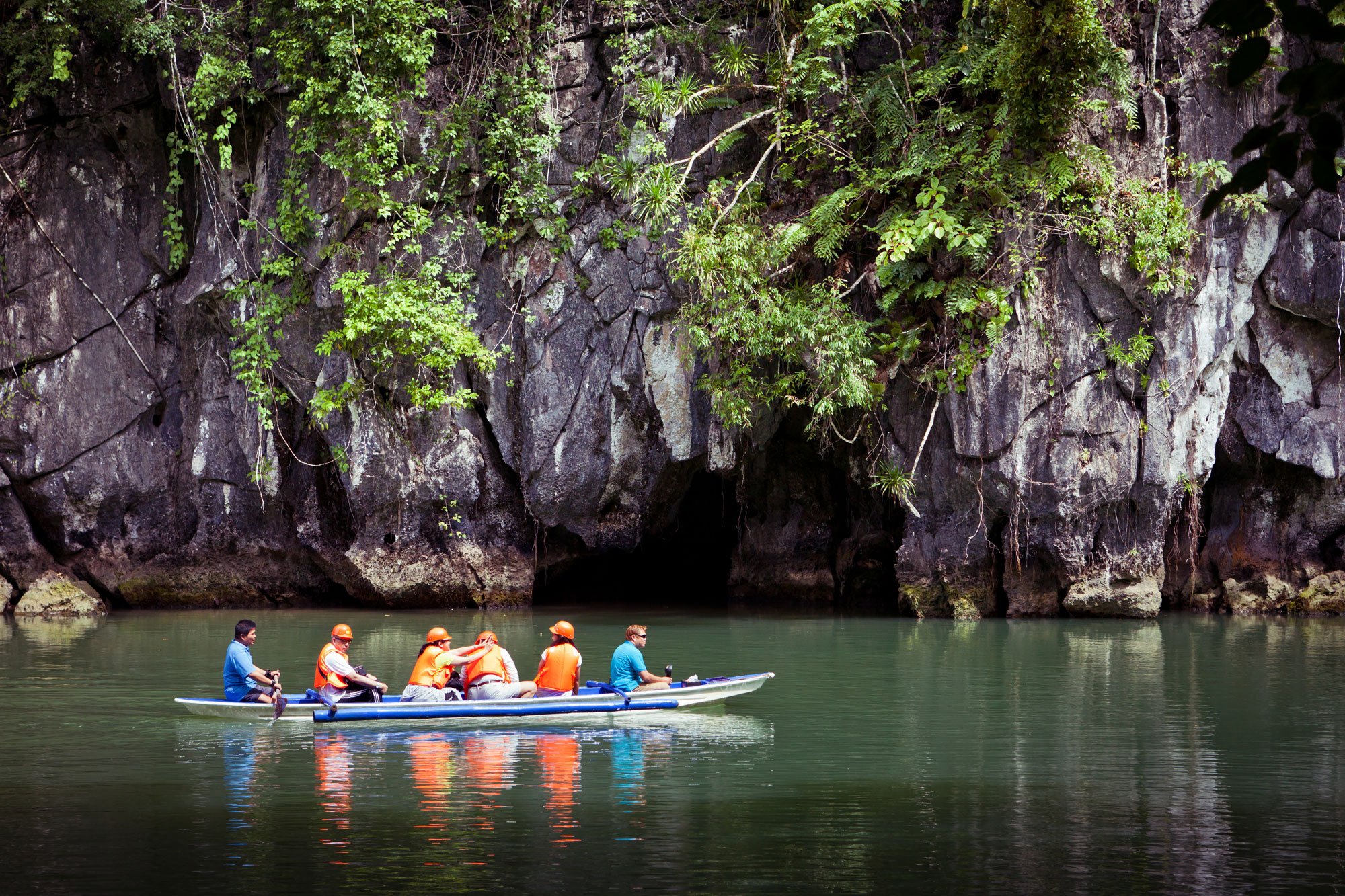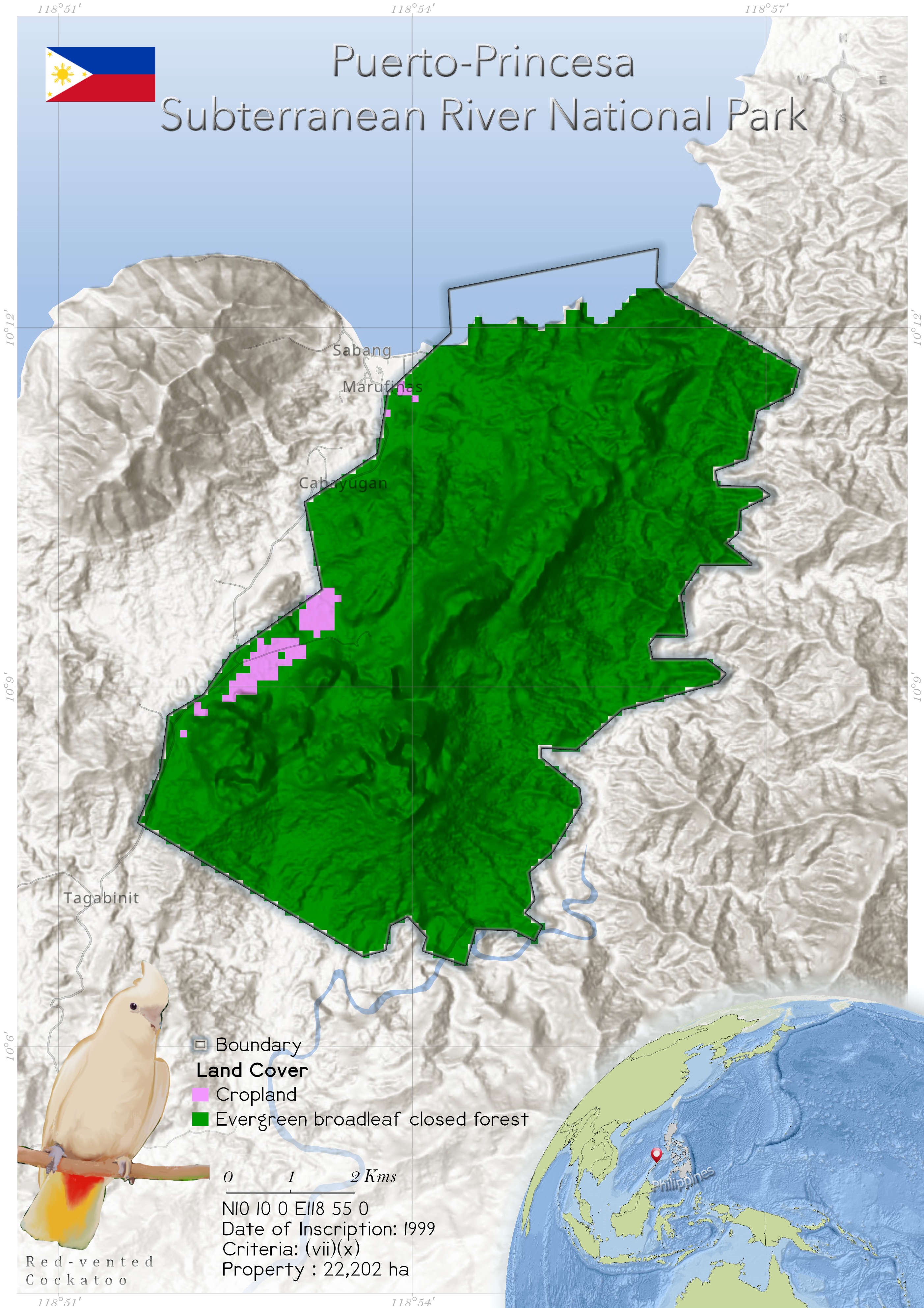
Puerto-Princesa Subterranean River National Park (652)
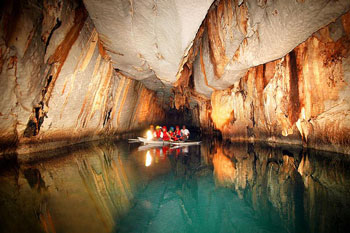 The Puerto-Princesa Subterranean River National Park is a world heritage property inscribed in 1997 known for the underground river which is situated beneath the limestone karst mountain in Philippines. The site represents a "mountain-to-sea ecosystem," and the river itself has five different ecosystems which inhabit great biodiversity of flora and fauna. The functioning of marine and terrestrial ecosystems together can be seen in the park, and the site is also famous for the wonderful cave systems.
The Puerto Princesa Subterranean River National Park is also under RAMSAR list of wetlands, and Palawan, which is a Biosphere Reserve under the Man and Biosphere Programme of UNESCO, is also comes under this property. A wide variety of vegetation, almost 800 species, are present in the terrestrial and mangroves, mossy forests, seagrass beds, and coral reefs can be observed in coastal areas.
According to the State of Conservation report 2014, the management is pretty efficient in the park and under the control of the local or provincial body. The National Integrated Protected Area Systems (NIPAS) Act of 1992 keeps an eye on the legal protection and conservation of the property. There are some threats to this property, such as forest clearing, agricultural activity, tourism, and pollution.
The Puerto-Princesa Subterranean River National Park is a world heritage property inscribed in 1997 known for the underground river which is situated beneath the limestone karst mountain in Philippines. The site represents a "mountain-to-sea ecosystem," and the river itself has five different ecosystems which inhabit great biodiversity of flora and fauna. The functioning of marine and terrestrial ecosystems together can be seen in the park, and the site is also famous for the wonderful cave systems.
The Puerto Princesa Subterranean River National Park is also under RAMSAR list of wetlands, and Palawan, which is a Biosphere Reserve under the Man and Biosphere Programme of UNESCO, is also comes under this property. A wide variety of vegetation, almost 800 species, are present in the terrestrial and mangroves, mossy forests, seagrass beds, and coral reefs can be observed in coastal areas.
According to the State of Conservation report 2014, the management is pretty efficient in the park and under the control of the local or provincial body. The National Integrated Protected Area Systems (NIPAS) Act of 1992 keeps an eye on the legal protection and conservation of the property. There are some threats to this property, such as forest clearing, agricultural activity, tourism, and pollution.
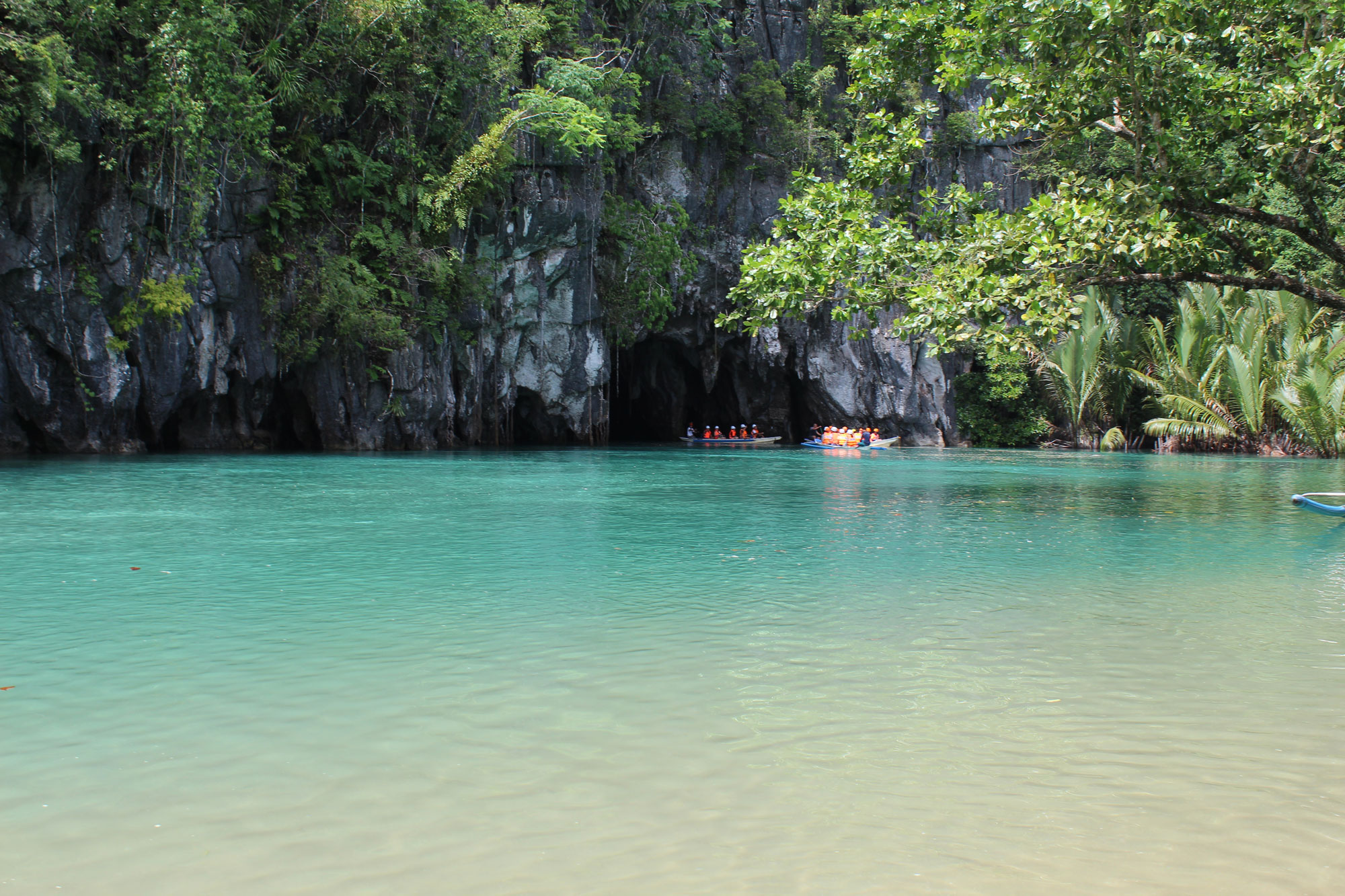 The Puerto-Princesa Subterranean River National Park, as the name of the property itself, emphasizes its uniqueness of river ecosystem, which is underground and 8.2 km long and flows beneath the limestone Karst Mountains, directly into the sea. The lower portion of the river is under tidal influence. With the immaculate natural beauty of the 'Mountain-to-sea' ecosystem and having World's most impressive cave systems, the park is rich in old-growth forests and a lot of wildlife. It is the best example of coastal-marine and terrestrial ecosystems (Manalo et al. 2016). The Park is located at 10°10'N by 118° 55'E, and in the north, it's surrounded by St Paul Bay and by the Babuyan River in the east. The national park is 76 km northwest of the city Puerto Princesa and 360 km Southwest of Manila (UNESCO whc.unesco.org).
The Puerto Princesa River Subterranean River National Park got declared as 'National Park' on March 26, 1971 (Acero 2020). The World Heritage property also includes two other designations; the Puerto Princesa Subterranean River National Park is under the RAMSAR List of Wetlands and Palawan Biosphere Reserve, which is under the UNESCO's Man and Biosphere Reserve (UNESCO Man And Biosphere Program). It is the 5th RAMSAR Site as Wetlands of International Importance in the Philippines (Manalo et al. 2016). The Palawan has the longest forest cover in the whole province of the country, which is almost 689,161 hectares, including the terrestrial forest and mangrove forest. The forests of Palawan are 10% of the total forest cover of the Philippines (Mabuhay-Omar et al. 2017). The BR is also a hotspot for the biodiversity in which many threatened species are residing. The place is home to mammals like binturong (Arctictis binturong) and long-tailed macaque (Macaca fascicularis), and around 27 endemic species are there (Mabuhay-Omar et al. 2017). Some threatened species of birds like the Palawan peacock and other 15 endemic bird species are there (Manalo et al. 2016). The islands of Palawan are one of the most significant destinations worldwide, and it's been designated as "the best islands in the world" (Manalo et al. 2016).
The core area of the park harbors the mangrove forests, which are home to a large diversity of flora and fauna. The large area of the park includes three barangays; the Barangay Marufinas and the other two adjacent barangays, which conserves the various landforms and the estuarine ecosystems that impart the Outstanding Universal Value of the property. The tourist's number is increasing in the park, and it has become one of the best-studied karst sites of the World (Agnelli et al. 2018).
While talking about the fauna, the property houses 165 bird species, 30 mammal species, 19 reptile species, and ten amphibian species, and there are around 800 floral species present. Some endemic mammals are Palawan tree shrew, Palawan porcupine, and Palawan stink badger and in the marine area, Dugong can be observed. Monitor lizards and marine turtles have been sighted in the area. Some fish, prawns, snakes and insects can be found in the subterranean region of the park (Acero 2020). The PPSRNP is home to various species that are listed in the IUCN Red List: the Palawan Hornbill (Anthracoceros marchei), Philippine Cockatoo (Cacatua haematuropygia), Alexandrian Laurel (Calophyllum inophyllum), Almaciga (Agathis philippinensis), Blackboard Tree (Alstonia scholaris), Philippine Flat-headed Frog (Barnourula busuangensis), Philippine crocodile (Crocodylus mindorensis), Green Turtle (Chelonia mydas), Bearcat (Arctictis binturong), and Palawan monitor lizard (Varanus palawanensis) (Acero 2020).
The Puerto-Princesa Subterranean River National Park, as the name of the property itself, emphasizes its uniqueness of river ecosystem, which is underground and 8.2 km long and flows beneath the limestone Karst Mountains, directly into the sea. The lower portion of the river is under tidal influence. With the immaculate natural beauty of the 'Mountain-to-sea' ecosystem and having World's most impressive cave systems, the park is rich in old-growth forests and a lot of wildlife. It is the best example of coastal-marine and terrestrial ecosystems (Manalo et al. 2016). The Park is located at 10°10'N by 118° 55'E, and in the north, it's surrounded by St Paul Bay and by the Babuyan River in the east. The national park is 76 km northwest of the city Puerto Princesa and 360 km Southwest of Manila (UNESCO whc.unesco.org).
The Puerto Princesa River Subterranean River National Park got declared as 'National Park' on March 26, 1971 (Acero 2020). The World Heritage property also includes two other designations; the Puerto Princesa Subterranean River National Park is under the RAMSAR List of Wetlands and Palawan Biosphere Reserve, which is under the UNESCO's Man and Biosphere Reserve (UNESCO Man And Biosphere Program). It is the 5th RAMSAR Site as Wetlands of International Importance in the Philippines (Manalo et al. 2016). The Palawan has the longest forest cover in the whole province of the country, which is almost 689,161 hectares, including the terrestrial forest and mangrove forest. The forests of Palawan are 10% of the total forest cover of the Philippines (Mabuhay-Omar et al. 2017). The BR is also a hotspot for the biodiversity in which many threatened species are residing. The place is home to mammals like binturong (Arctictis binturong) and long-tailed macaque (Macaca fascicularis), and around 27 endemic species are there (Mabuhay-Omar et al. 2017). Some threatened species of birds like the Palawan peacock and other 15 endemic bird species are there (Manalo et al. 2016). The islands of Palawan are one of the most significant destinations worldwide, and it's been designated as "the best islands in the world" (Manalo et al. 2016).
The core area of the park harbors the mangrove forests, which are home to a large diversity of flora and fauna. The large area of the park includes three barangays; the Barangay Marufinas and the other two adjacent barangays, which conserves the various landforms and the estuarine ecosystems that impart the Outstanding Universal Value of the property. The tourist's number is increasing in the park, and it has become one of the best-studied karst sites of the World (Agnelli et al. 2018).
While talking about the fauna, the property houses 165 bird species, 30 mammal species, 19 reptile species, and ten amphibian species, and there are around 800 floral species present. Some endemic mammals are Palawan tree shrew, Palawan porcupine, and Palawan stink badger and in the marine area, Dugong can be observed. Monitor lizards and marine turtles have been sighted in the area. Some fish, prawns, snakes and insects can be found in the subterranean region of the park (Acero 2020). The PPSRNP is home to various species that are listed in the IUCN Red List: the Palawan Hornbill (Anthracoceros marchei), Philippine Cockatoo (Cacatua haematuropygia), Alexandrian Laurel (Calophyllum inophyllum), Almaciga (Agathis philippinensis), Blackboard Tree (Alstonia scholaris), Philippine Flat-headed Frog (Barnourula busuangensis), Philippine crocodile (Crocodylus mindorensis), Green Turtle (Chelonia mydas), Bearcat (Arctictis binturong), and Palawan monitor lizard (Varanus palawanensis) (Acero 2020).
Criterion (vii)
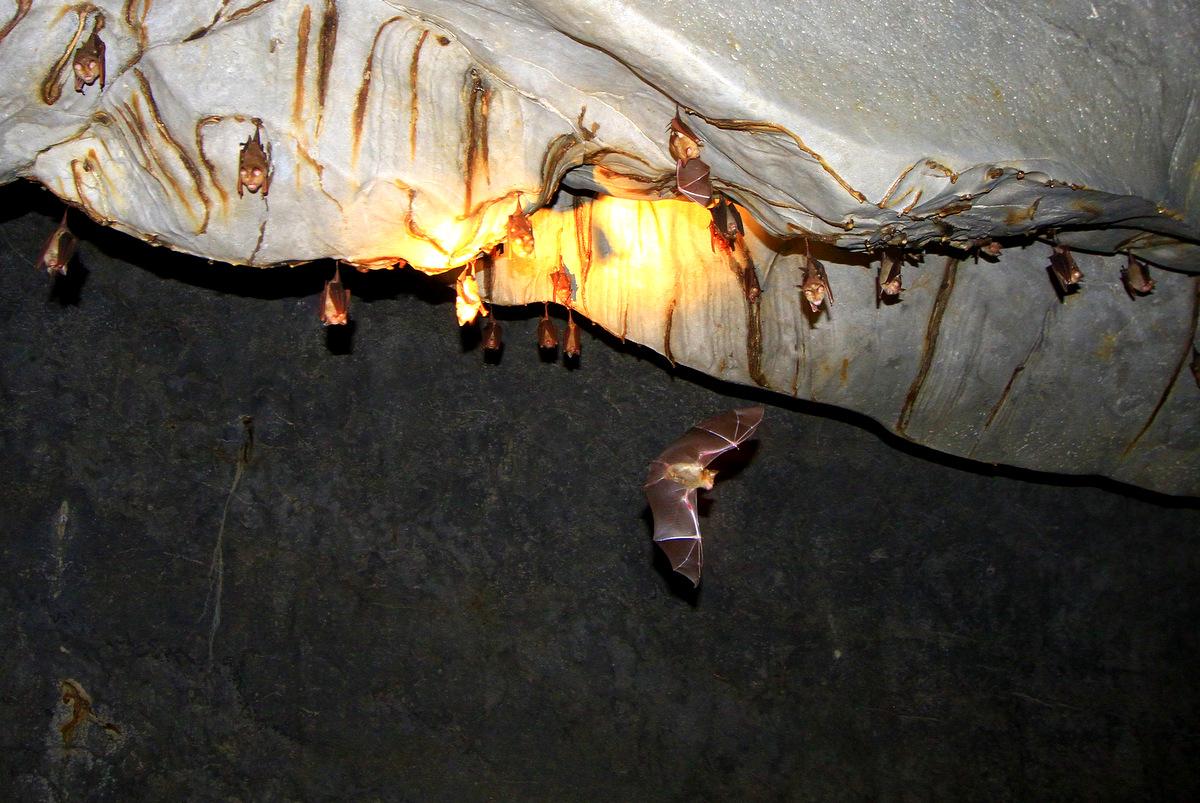 The Puerto-Princesa Subterranean River National Park features a spectacular limestone or karst landscape. It contains an underground river that flows directly to the sea. The lower half of the river is brackish and subject to ocean tide. The associated tidal influence on the river makes this a significant natural phenomenon. The river’s cavern exhibits dramatic speleothems and several large chambers of as much as 120m wide and 60m high. Its accessibility and navigability up to 4.5km inland allows it to be experienced by the general public, who can view the magnificent rock formations on a river cruise unequalled by any other similar experience elsewhere in the world.
The Puerto-Princesa Subterranean River National Park features a spectacular limestone or karst landscape. It contains an underground river that flows directly to the sea. The lower half of the river is brackish and subject to ocean tide. The associated tidal influence on the river makes this a significant natural phenomenon. The river’s cavern exhibits dramatic speleothems and several large chambers of as much as 120m wide and 60m high. Its accessibility and navigability up to 4.5km inland allows it to be experienced by the general public, who can view the magnificent rock formations on a river cruise unequalled by any other similar experience elsewhere in the world.
Criterion (x)
The property contains globally significant habitat for biodiversity conservation. It includes a full mountain-to-sea ecosystem, protecting the most significant forest area within the Palawan Biogeographic Province. There are eight intact forest formations: forest on ultramafic soil, forest on limestone soil, montane forest, freshwater swamp forest, lowland evergreen tropical rainforest, riverine forest, beach forest, and mangrove forest, included in the property. It contains outstanding biodiversity with the Palawan Moist Forest recognized by the WWF’s Global Report as containing the richest tree flora, with high levels of regional and local endemism and as being the largest and most valuable limestone forest in Asia.
Status
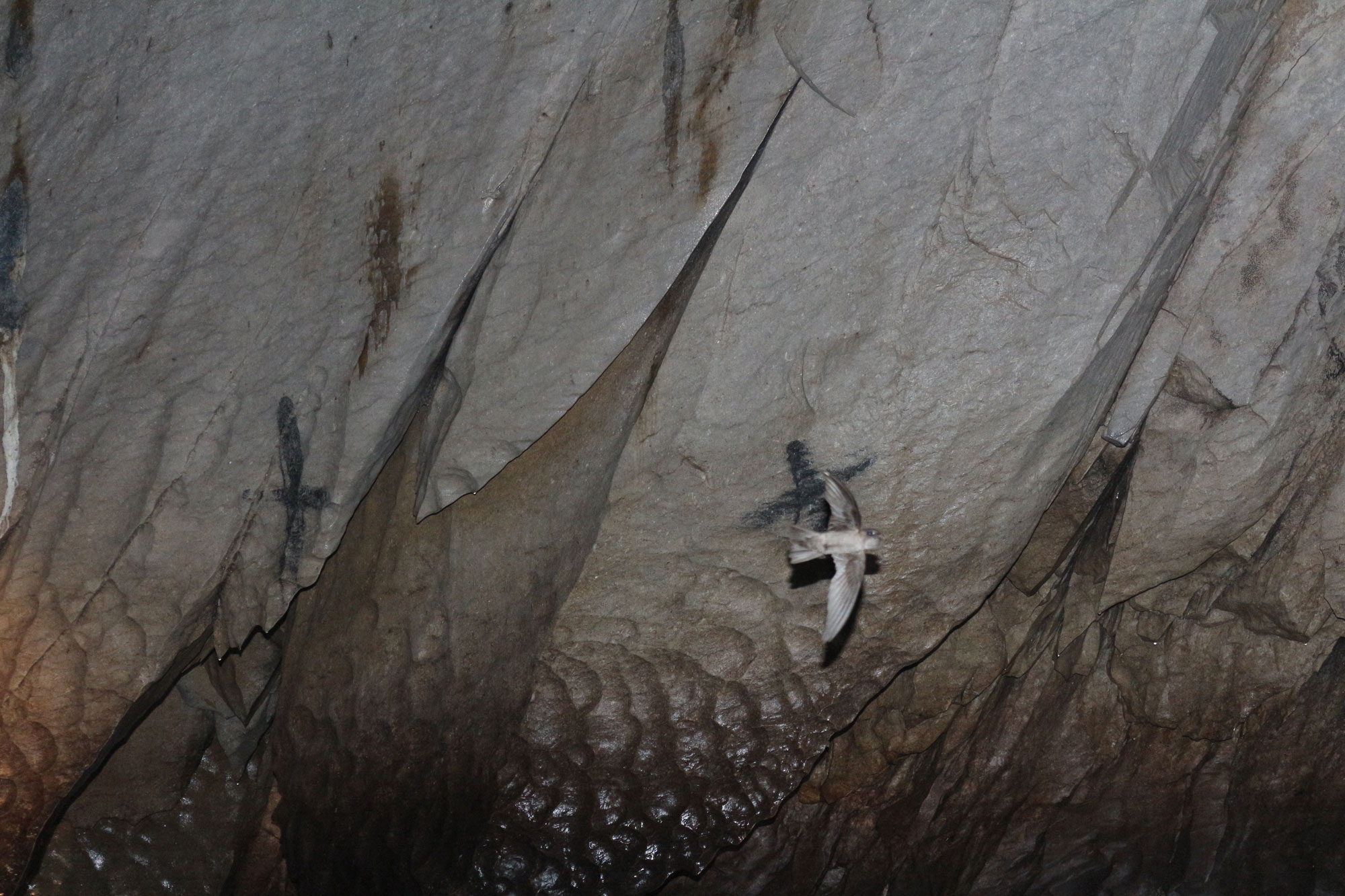 By evaluating the State of Conservation Report 2015 of UNESCO, it gathered that Instead of managing the property at the national level, the responsibility of protection and management had been provided to the local body; to the city government of Puerto Princesa through the agreement for the legal ownership. The authority of the park management was provided to the local or provincial level via a Memorandum of Agreement (MOA) (Acero 2020). To look after the legal protection and conservation of the property, the National Integrated Protected Area Systems (NIPAS) Act of 1992 plays an important role. To improve the conservation strategies, many multilateral agreements provisions between national government agencies and local stakeholders were made (UNESCO whc.unesco.org).
The property is facing threats in primarily forest clearing, agricultural activities, tourism activities, and many more, which needs to be addressed through the management guidelines. The tourism management adjectives on the management plan are focusing on lowering the negative effects on the natural values of the park. The visitors are increasing to the park, which in turn requiring the training of more staff in the park planning and management of tourism activities. By going through the IUCN World Heritage Outlook 2020, it can be stated that the place is not able to accommodate such huge numbers of visitors; hence the increasing tourism is causing serious damage to the property. However, the management intends to improve the visitor’s experience with nature and, along with protecting the natural values of the park, which represents the Outstanding Universal Values. Other than tourism, water quality is getting affected in the underground river by the activities in the upstream catchment area and by pollution (IUCN World Heritage Outlook 2020).
The property is facing a very serious threat in the case of the illegal wildlife trade. The Philippines is home to one species of pangolin, the Philippine or Palawan Pangolin Manis culionensis, so named due to its restricted range on Palawan and adjacent islands (Gaubert & Antunes, 2005; Lagrada et al. 2014). According to Gomez & Sy et al. 2018, the Illegal pangolin trade in the Philippines is increasing at a very alarming rate. It has increased nine times since the last two years; in the year 2018-19, 6,894 pangolins got seized. In 2018, to address the ongoing illegal trade, the government of the Philippines is worked through the Conservation Planning Workshop for the Philippine Pangolin (Sy & Krishnasamy 2020).
By the assessment of IUCN World Heritage Outlook 2020, the threats are apparently low, and the management and protection of the area are making efforts to protect the water quality and quantity in the catchment area. This depicts that the Outstanding Universal Values would persist for the long term. Some illegal activities within the sites are causing issues, and considerable damage, which would directly affect the integrity of the site, and activates like this has to be addressed as soon as possible. The report reflects a measurable concern on visitation, illegal land sales, and land claims.
By evaluating the State of Conservation Report 2015 of UNESCO, it gathered that Instead of managing the property at the national level, the responsibility of protection and management had been provided to the local body; to the city government of Puerto Princesa through the agreement for the legal ownership. The authority of the park management was provided to the local or provincial level via a Memorandum of Agreement (MOA) (Acero 2020). To look after the legal protection and conservation of the property, the National Integrated Protected Area Systems (NIPAS) Act of 1992 plays an important role. To improve the conservation strategies, many multilateral agreements provisions between national government agencies and local stakeholders were made (UNESCO whc.unesco.org).
The property is facing threats in primarily forest clearing, agricultural activities, tourism activities, and many more, which needs to be addressed through the management guidelines. The tourism management adjectives on the management plan are focusing on lowering the negative effects on the natural values of the park. The visitors are increasing to the park, which in turn requiring the training of more staff in the park planning and management of tourism activities. By going through the IUCN World Heritage Outlook 2020, it can be stated that the place is not able to accommodate such huge numbers of visitors; hence the increasing tourism is causing serious damage to the property. However, the management intends to improve the visitor’s experience with nature and, along with protecting the natural values of the park, which represents the Outstanding Universal Values. Other than tourism, water quality is getting affected in the underground river by the activities in the upstream catchment area and by pollution (IUCN World Heritage Outlook 2020).
The property is facing a very serious threat in the case of the illegal wildlife trade. The Philippines is home to one species of pangolin, the Philippine or Palawan Pangolin Manis culionensis, so named due to its restricted range on Palawan and adjacent islands (Gaubert & Antunes, 2005; Lagrada et al. 2014). According to Gomez & Sy et al. 2018, the Illegal pangolin trade in the Philippines is increasing at a very alarming rate. It has increased nine times since the last two years; in the year 2018-19, 6,894 pangolins got seized. In 2018, to address the ongoing illegal trade, the government of the Philippines is worked through the Conservation Planning Workshop for the Philippine Pangolin (Sy & Krishnasamy 2020).
By the assessment of IUCN World Heritage Outlook 2020, the threats are apparently low, and the management and protection of the area are making efforts to protect the water quality and quantity in the catchment area. This depicts that the Outstanding Universal Values would persist for the long term. Some illegal activities within the sites are causing issues, and considerable damage, which would directly affect the integrity of the site, and activates like this has to be addressed as soon as possible. The report reflects a measurable concern on visitation, illegal land sales, and land claims.
